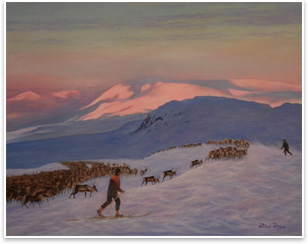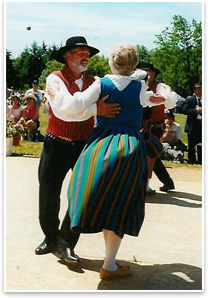
Mithun Selected to Design Seattle’s Nordic Heritage Museum by Zach Mortice
Summary: Seattle-based Mithun will design the Nordic Heritage Museum’s new building with the help of Finnish architect Juhani Pallasmaa. The museum will use contemporary and welcoming Modern forms to reinforce its community focus and mediate the twin narratives of the Scandinavian immigrant to America and the Scandinavians who remained in their native countries. An international team of architects will be designing a new building for Seattle’s Nordic Heritage Museum, the only Nordic museum to feature artifacts and exhibits from all five Scandinavian nations: Finland, Sweden, Norway, Denmark, and Iceland. In early February, the museum announced it had selected local firm Mithun. Finnish architect Juhani Pallasmaa, Hon. FAIA, will also collaborate on the project. Since 1980, museum organizers have been renting a converted three-story, early-20th century brick school from the local school district to house their museum. Its exhibits feature Scandinavian folk art, musical instruments, contemporary landscape paintings, and more. The school building was never ideal for a museum and required considerable shoehorning to make the exhibits and public functions fit. “Things were really worked to fit the existing space, and quite heroically,” says Rich Franko, AIA, the museum’s project director for Mithun.
Community-based effort The museum’s wide array of community uses and strong community presence makes this type of local support all the more vital. The facility’s programmatic complexity will likely be managed by community input. “The museum is an interesting mix between a cultural center and a museum,” says Nelson. “We’ve got everything from the Norwegian Male Chorus to the Scandinavian Language Institute, woodcarving classes, and painting.” In addition to regular exhibit space, the new museum will also feature performance spaces and classrooms. Two narratives
“One of the biggest challenges is figuring out what is Nordic in Seattle today,” says Franko. Pallasmaa is uniquely qualified to help define the architectural meaning of “Nordic” in the contemporary world. A prolific architecture writer, he’s been celebrated for the design of Helsinki’s sleek glass and steel Kamppi Centre, a massive mixed-use building with transit, commercial, and office space components. Franko says he intends for the museum’s design to speak to the Scandinavian immigrant experience (the focus of the current museum’s Dream of America permanent exhibition), as well as to the parallel story of Scandinavians who chose to remain in their native lands. The museum will put these two narratives in dialogue with each other, he says. The final design, Franko says, will function on an “elemental level of materials, of structural honesty, of simplicity of form” and perhaps most importantly—“a very serious consideration of daylight.” Use of state funding requires that the building be certified LEED® Silver at least, but exact sustainability goals haven’t been set. Franko says Mithun is interested in talking with Scandinavian designers about how they can adapt localized Nordic sustainability practices to their museum project in Seattle. |
||
Copyright 2008 The American Institute of Architects. All rights reserved. Home Page |
||
home
news headlines
practice
business
design
recent related
› From Farm to Market, Down the Stairs, Around the Block
› AIA Seattle Design Celebrates “Living Change”
› Mixed-Use Project in Seattle Revitalizes Neighborhood
› Iceland Wants an Oil Change
Visit Mithun’s Web site.
Visit the Nordic Heritage Museum’s Web site.
Photos:
Photos from the Nordic Heritage Museum’s Web site. Reproduced with the museum’s permission.
1. December Life, a painting by Roland Pantze in the Nordic Heritage Museum’s Roland Pantze: Painter of Sami Life exhibit, currently on display.
2. Artifacts from the Finland Room, one of the museum’s permanent collections.
3. The new museum will function in much the same way as the current museum, which sponsors activities for the communities, including folk dancing demonstrations.

 How do you . . .
How do you . . . A year and a half ago, the museum purchased a parcel of land in Seattle’s Ballard neighborhood for their new facility, a former industrial area with a strong Nordic and maritime heritage. The new museum will be roughly the same size as the current one (45,000 square feet), though its new home will be less constricted and partitioned, and more appropriate for exhibits. Eric Nelson, the museum’s executive director, says he hopes the new building will be complete in four to five years. The project’s initial budget is $56 million.
A year and a half ago, the museum purchased a parcel of land in Seattle’s Ballard neighborhood for their new facility, a former industrial area with a strong Nordic and maritime heritage. The new museum will be roughly the same size as the current one (45,000 square feet), though its new home will be less constricted and partitioned, and more appropriate for exhibits. Eric Nelson, the museum’s executive director, says he hopes the new building will be complete in four to five years. The project’s initial budget is $56 million. “There’s a real desire to make sure the new museum reflects the values of the current museum as far as having a real community base and comfortable feel; really very home-like,” says Nelson. Defining how this set of ideals will manifest itself in the new Nordic Heritage Museum’s design will be one of the architects’ primary challenges.
“There’s a real desire to make sure the new museum reflects the values of the current museum as far as having a real community base and comfortable feel; really very home-like,” says Nelson. Defining how this set of ideals will manifest itself in the new Nordic Heritage Museum’s design will be one of the architects’ primary challenges.